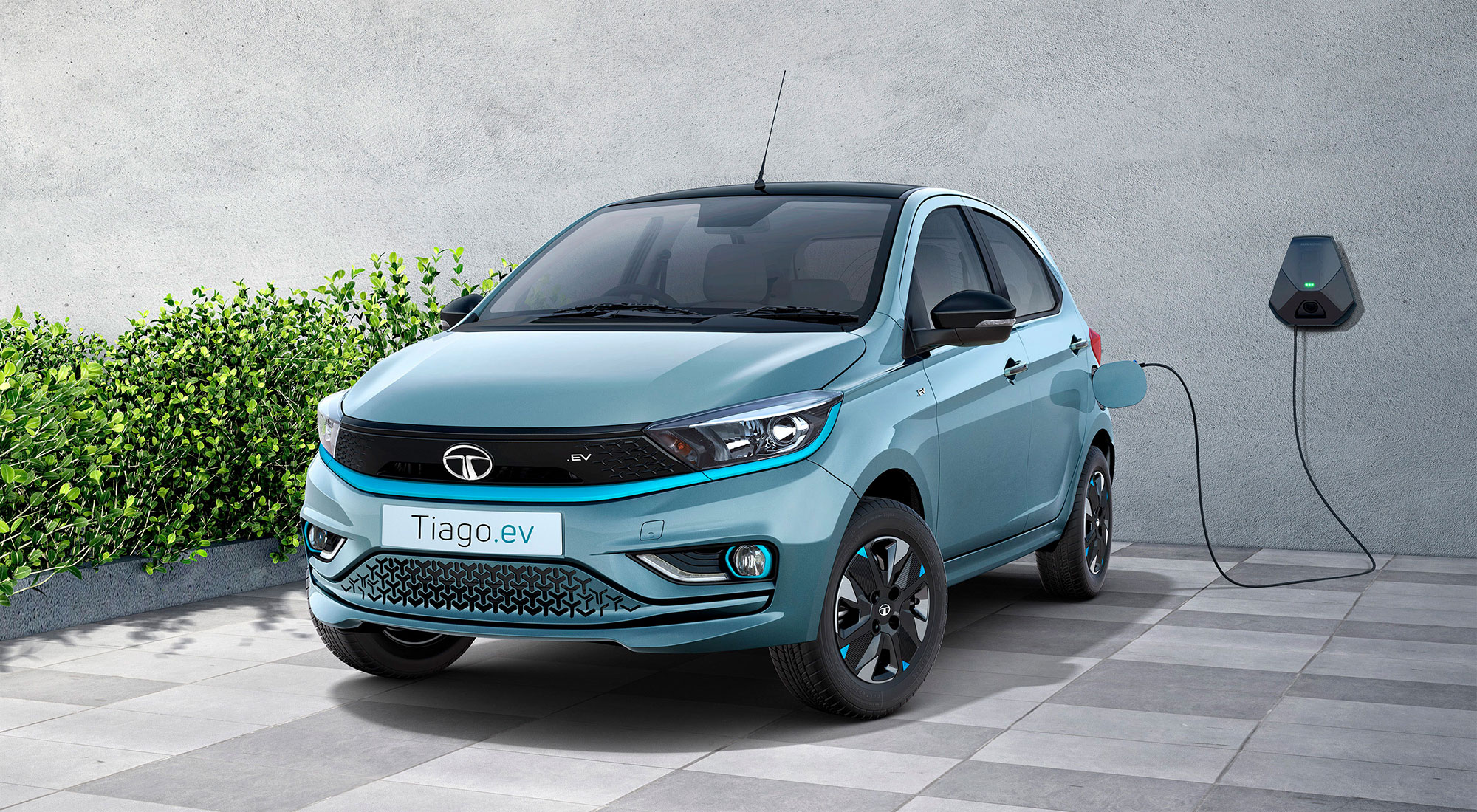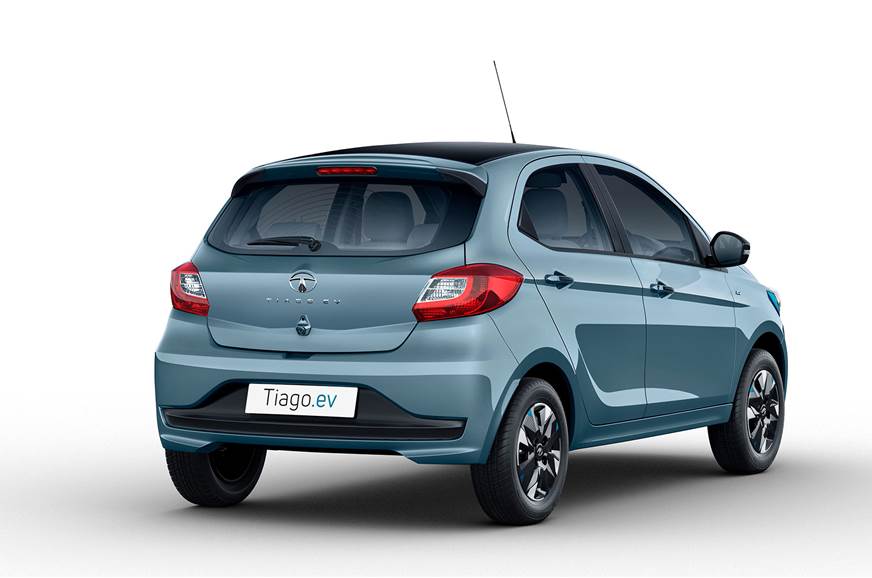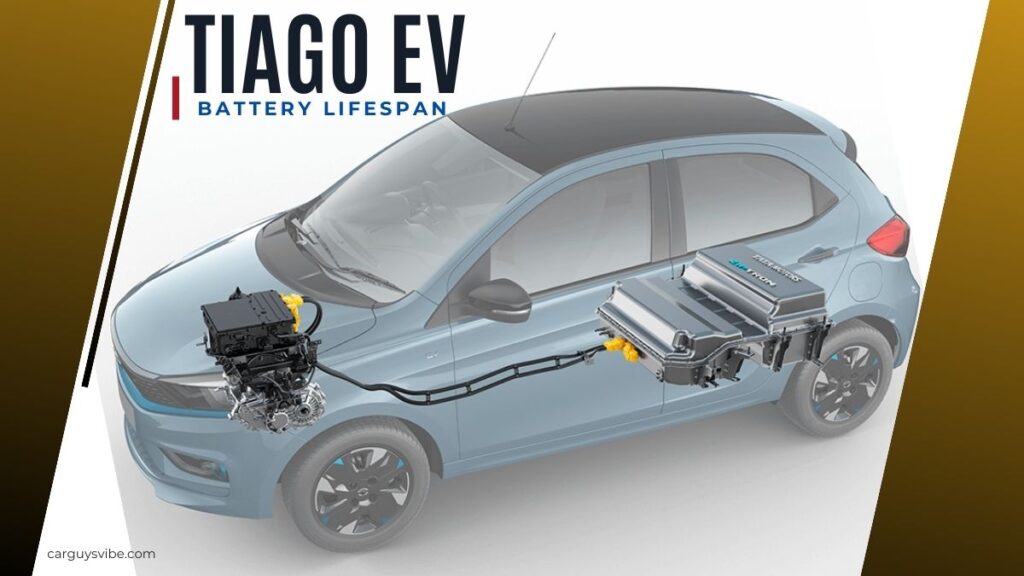The Tata Tiago EV has garnered attention for its impressive range and cost-effective urban commuting. However, a crucial aspect to consider is the Tata Tiago EV battery life. Just like the batteries in our mobiles or electronic gadgets degrade over time, it raises questions about the performance and reliability of the Tiago EV battery after several years. Is it a worthwhile purchase? Will it genuinely contribute to reducing running costs and overall expenses? Let’s delve into these inquiries and uncover the answers.

Types of battery in EVs
The heart of any electric vehicle (EV) is its battery, and the type of battery used can significantly impact the car’s performance, range, and cost. Three of the most common types of batteries found in EVs today are Nickel-Cobalt-Aluminum NCA, Nickel-Cobalt-Manganese NCM, and Lithium Iron Phosphate LFP and they all have their distinct features.
Here’s a table summarizing the key differences between NCA, NCM, and LFP batteries:
| Aspects | NCA | NCM | LFP |
| Energy density | Highest | High | Lowest |
| Charging speed | Fastest | Fast | Slowest |
| Lifespan | Shortest | Medium | Longest |
| Cost | Highest | Medium | Lowest |
| Safety | Moderate | Moderate | Highest |
Tata Tiago EV Battery
Like our phones and electronics gadgets, the battery of EV also degrades over the time but this happens in a very long phase and in a different way. The exact chemistry of the Li-ion batteries used in the Tata Tiago EV is not officially confirmed by Tata Motors, but based on available information and market trends, NCM and LFP are the most likely Li-ion chemistries used in the respective Tata Tiago EV battery packs.

Tata Tiago EV Battery warranty
The battery warranty spans of Tiago EV is 8 years or 1,60,000 kilometers, whichever comes first. This means that should the battery encounter issues within this timeframe, Tata Motors will provide a free replacement.
Tata Tiago EV Battery Life
Given the novelty of EVs in the Indian market, comprehensive data on the Tata Tiago EV battery life is currently limited. The surge in EV sales, roughly around 2020, makes it challenging to estimate the true lifespan, unlike the more established assumptions for traditional ICE cars. While we’ve witnessed impressive mileage from Tesla cars globally, exceeding 100,000 miles or 160,000 km, the Indian EV market is still in its early stages. Assessing the actual lifespan of the Tata Tiago EV remains a task, but a reasonable expectation, considering the 8-year warranty provided by the company, is that the EV should operate seamlessly for around 10 years, again this is just an speculation.
Tata Tiago EV Price
| Variants | Price (Ex-Showroom) |
| Tiago EV XE Medium Range | Rs. 8.69 Lakhs |
| Tiago EV XT Medium Range | Rs. 9.29 Lakhs |
| Tiago EV XT Long Range | Rs. 10.24 Lakhs |
| Tiago EV XZ Plus Long Range | Rs. 11.04 Lakhs |
| Tata Tiago EV XZ Plus Long Range Fast Charger | Rs. 11.54 Lakhs |
| Tata Tiago EV XZ Plus Tech LUX Long Range | Rs. 11.54 Lakhs |
| Tata Tiago EV XZ Plus Tech LUX Long Range Fast Charger | Rs. 12.04 Lakhs |
Tata Tiago EV battery replacement cost
The most significant expense associated with replacing an electric car’s battery is the cost of the battery unit itself, along with additional charges for labor or technician services, typically ranging from Rs 5,000 to Rs 10,000, depending on the location. Consequently, the anticipated cost for replacing the Tata Tiago EV battery in India is expected to be in the range of Rs 4.1 lakh to Rs 5.1 lakh. This cost can vary based on factors such as the type of battery and the manufacturer. As a general rule of thumb, budgeting around 20-30% of the total car cost is a reasonable estimate for a new battery.

Tata Tiago EV Range and Running Cost
The Tata Tiago EV offers an enticing combination of budget-friendly running and promising range, making it a popular choice for Indian drivers. Here’s a breakdown of its range and running cost:
Range:
Tata Tiago EV Long Range variant boasts an ARAI-certified range of 315 km, ideal for covering daily commutes and errands within the city but actual real life range would be around 230 km.
Running Cost:
Fuel costs: Compared to petrol-powered cars, the Tiago EV offers significant savings in the long run. With electricity prices significantly lower than petrol, charging your Tiago EV translates to substantial fuel cost savings over time.
Maintenance costs: Electric vehicles have fewer moving parts compared to their petrol counterparts, leading to lower maintenance costs.
Here’s a rough estimate of daily running cost comparison:
Petrol-powered car: Assuming an average fuel efficiency of 15 km/l and petrol price of Rs. 100/liter, a daily commute of 20 km would cost you approximately Rs. 133.
Tata Tiago EV: With an electricity rate of Rs. 10/kWh, a 20 km commute would cost around Rs. 24 (based on 19.2kWh battery), leading to significant savings.
Factors Affecting Range and Running Cost:
Driving style: Aggressive driving with rapid acceleration and braking can reduce range and increase electricity consumption.
Climate: Extreme temperatures can impact battery performance and range.
Charging habits: Frequent fast charging can stress the battery and is less efficient than slower charging.
To maximize range and running cost savings:
Maintain a smooth and consistent driving style.
Park in shaded areas and avoid extreme temperatures.
Prioritize slower, level 2 charging whenever possible.
Verdict
Considering its promising range, potential cost savings, and extended battery warranty, the Tata Tiago EV emerges as a compelling choice for urban commuters seeking an affordable and eco-friendly driving experience. By following recommended charging practices and mindful driving habits, you can optimize the Tiago EV’s performance and reap the benefits of its cost-effective running for years to come.
Remember, the decision ultimately depends on your individual needs and driving patterns. If you primarily cover city commutes and prioritize budget-friendly options, the Tiago EV stands as a strong contender only if your running is extreamely high. However, if your driving requirements extend beyond city limits or involve frequent long journeys, you might need to consider ICE or Hybrid cars. And if you are a person who like to own vehicle for lifetime then honestly we do not have answer whether Tata Tiago EV will last as long as our ICE cars. In the mean time we will update you with any progress regarding life span of EV batteries.
We hope this information helps you make an informed decision.
Furthermore, for more clarity check out this video for a detailed financial comparison based on your daily commute, comparing traditional petrol cars with Electric Vehicles (EVs).

